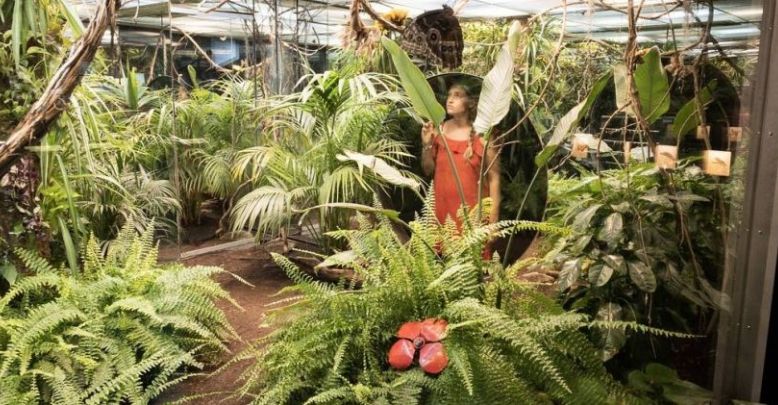- Home page
- Tourism
- Tasting
- Tarn, Aveyron Gastronomy
- Gastronomy and regional products of the Tarn
- Tarn, Aveyron Gastronomy
- Tasting
- Tourism
Gastronomy and regional products of the Tarn
The Tarn also has its share of local specialities and products. Tasty, delicious, there's something to fill your basket with at any time of year. For those with a sweet tooth, you'll be amazed to discover the multitude of crunchy, sweet and succulent cakes and specialities from the Tarn! Visit one of our bakeries or patisseries for a real treat.
Tarn specialities and local products
The Tarn boasts an inescapable wealth of flavors that will delight you with every bite. From fruit to vegetables, meat to cheese and truffles to pumpkins, you'll love discovering the gastronomy of this gourmet region. Happy tasting in the Tarn!
Pink garlic of Lautrec
This is a very old type of garlic. The first bulbs cultivated have been estimated to date back to the middle ages. It is soft ; it can be eaten raw (without cringing!). It can be candied to extract all its sweetness. It has a rigid shape, unlike purple or white garlic and so it cannot be braided. It is sold in clusters (also called “manouille”). The skin of this garlic has lovely small pink veins. “L’ail en chemise" means cooking the garlic without peeling it. You can add it to the frying oil for chips for example. It is delicious. Crush it to add to fresh pasta with a knob of butter.
The ham of Lacaun
The Tarn is a land of charcuterie and meat salting. Try Lacaune ham (PGI), as well as sausage and salami. It can be found whole, in slices or portions. It is from local pork, fed with the grain of the southwest. Finely marbled, it is certainly salty, but not too much so and strongly flavoured !
The Tarn, and in particular the region of the Monts Lacaune, is difficult to access. From the middle-ages salt and other food was transported by boat and ham was the perfect product to preserve. Fresh meat was traded for salt, which was then used to salt the food and allow the farmers of the small villages to take them home and preserve them for a long time !
Squash, pumpkin and other cucurbits
Squash is a good accompaniment for Lacaune ham. A velvety squash soup sprinkled with diced ham is very tasty. Squash, pumpkin, butternut squash and other cucurbits, have been popular since the reintroduction of old fashioned and forgotten vegetables. However, squash was never forgotten in the Tarn, it is a popular vegetable which is cooked in many different ways. The “Mesturet” is a traditional dessert recipe that can also be found in Toulouse, made with squash, corn flour, fruit peel and rum, yum !
Lescure Onions
Farmers developed the soft Lescure onion at the beginning of 20th century. It is ready to sell between the new season's onions being available and the preserved onions being available.
Veal of the Lauragais
In the west of the department, in the Lauragais, you can find veal of excellent quality. It has a “Label Rouge” (red label) ; the meat is light and savoury. The best veal comes from the “Blonde d'Aquitaine” and “Limousine” breeds. You can buy this meat from the butcher or directly from the producers in the markets and on veal farms.
Couleur Café Albi
Couleur Café Albi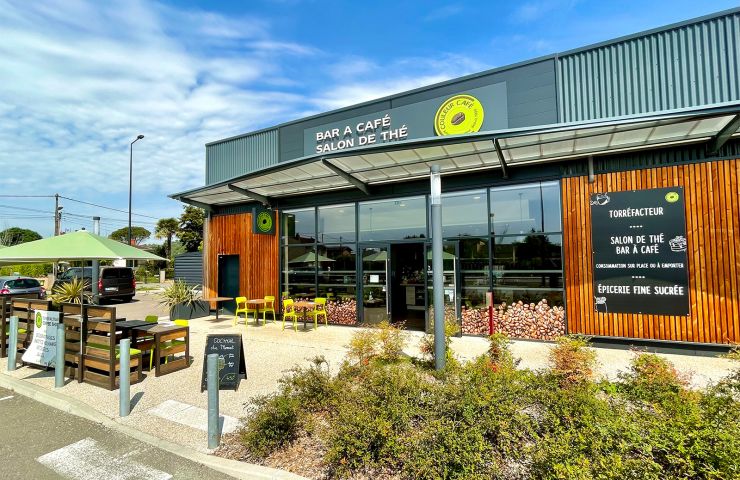
Couleur Café, an artisanal roastery adored by coffee lovers in Albi Breathe in the delicious aromas of coffee ...
1,5 km - Albi
Gayraud chocolate factory
Gayraud chocolate factory
Chocolaterie Gayraud, passionate artisan chocolatiers in Tarn Arriving in front of the storefront, you just want to ...
3,4 km - Albi
Chocolaterie Gayraud
Chocolaterie Gayraud
The Julien Gayraud chocolate shop and tea room: sublime pastries to be enjoyed with your eyes closed Don't wait for ...
3,4 km - Albi
Responchons : asparagus
Pronounce it correctly : the "Respountchou" can be found near Cordes-sur-Ciel. It is a “Tamier Commun” or “Haut Liseron”, (or herbe aux femmes battues – herbs of beaten wives, this rather unpleasant nickname came from its use as a plaster or poultice to treat bruises) at harvest time there is a great celebration! Harvesting begins in mid-April depending on the weather. The harvesting period is short. Asparagus can be found in the boxwoods, close to brambles, positioned in the sun and not in shade. Do not gather them from the road side (because of pollution). The asparagus must be carefully washed in vinegar several times to kill insects and clean potential contamination. It can be eaten in salads, raw (a bit like dandelions, it has a bitter taste) or just blanched or in an omelette, with potatoes and perhaps in a tart. Be careful, it is a diuretic plant ! To be eaten in moderation. It can be found in the countryside, sometimes in the markets and even on restaurant menus during the season.
The Sureau
Another product harvested from nature and which is popular in the Tarn, it is the sureau (elderberry). You need to be careful with this little black berry as some varieties are toxic (if you want to gather them, check in a specialist book). It can be made into jellies, jams, syrups... It is simply delicious on bread, or with cheese. The syrup is made into an aperitif with white wine or champagne (kir). The sureau also has some medicinal properties (the sambucus nigra), it is an anti-inflammatory, anti-allergy and has cleansing properties. It can be found in pharmacies, in homeopathy, phytotherapy and as an infusion for potions.
The cheese of the Tarn
With having so many meadows, of course, there are some super cheeses in the Tarn : raw milk goats' cheese. There is the “Secret du Berger”, a light mousse type sheeps' cheese made from raw milk, and matured for 15 days. The ash covered “Pyramide de Brebis” which is square in shape, the “Rouelle du Tarn”, with a hole in the middle, a savoury soft mild cheese. Cabécou, Rondouilié, logs and bricks, small cheese aperitifs ... You will be spoiled...
The truffle of the Tarn
And yes, the black truffle of the Périgord is not only in the Dordogne! This black mushroom, which often grows around the roots of oak trees, is approximately 1 to 20cm (0.40 to 7.87 inches) under the ground. It rarely shows on the surface and this is why animals are trained to find it : dogs, pigs and flies too ! The black truffle of the Tarn has always been there and at the beginning of 20th century it was harvested to sell by a cooperative. Truffle oak trees were planted on the limestone plateau of the Tarn, where these trees thrive the best. Approximately one hundred hectares (247 acres) have been developed. Each year in January in Villeneuve-sur-Vère the “Fête du diamant noir” (black diamond fair) takes place to celebrate this truffle.
Gastronomy of the Tarn, some emblematic dishes of the region
Tarn cuisine is particularly healthy. Tarn specialities are mainly made up of good vegetables from the Tarn plain, charcuterie from the Monts de Lacaune and the Gaillac wine region. We take you on a tour of Tarn gastronomy, with a Top 10 list of the best Tarn dishes.
- A Quercy melon, perfectly ripe, juicy and sweet, served with a local Lacaune ham. Melons are grown extensively throughout the Quercy region, particularly in Tarn, Tarn-et-Garonne and Lot-et-Garonne. You'll find them at every market and restaurant in the Tarn.
- Tarn truffle brouillade is a dish of excellence in simplicity! The Quercy black truffle is a rare and hard-to-find mushroom, but it will sublimate any recipe. Its combination with eggs is always a success! Find out more about this choice ingredient...
- Tourin à l'ail de Lautrec is a traditional garlic soup. For the cook, it's child's play: stock, eggs and Lautrec garlic, of course! Enhanced with hard bread, vermicelli, or served with croutons, melted cheese... Every family has its own recipe, and you're sure not to taste any two alike.
Tip: Discover Lautrec garlic through gourmet cuisine at the Oc Xalis restaurant.
- Lescure onion soup is an ancestral custom in the Tarn region. It's regularly served the day after a party, to recover from a long evening. It's also traditionally served to newlyweds after their wedding night. It's the onion's antioxidant properties that are so beneficial. A good poultry broth, Lescure onions and a few herbs are all you need to make it.
- Respounchous are simply wild asparagus, found in the ancient Rouergue region, particularly near Cordes-sur-Ciel. Respounchous can be eaten in a variety of ways: as a salad, in a gratin, or in a pie. The most famous is the respounchous tart. They appear in spring, on hillocks and embankments, and often line country roads. They vary in size from around 5 to 8 centimetres. But only the young shoots are eaten.
- Albigensian pot-au-feu is a true feast dish from the Tarn. Like the classic pot-au-feu, it features vegetables and long-cooked beef, including chuck and scoter. But what really sets the Albigensian version apart is what's added. For the meat, duck or goose thighs are used for added indulgence. And instead of potatoes, white beans are used.
- Chichoulet du Tarn is known as “chickpea cassoulet”. It has to be said that the two dishes are very similar. Chickpeas are a little-known crop in the Tarn, but they're delicious! Surprisingly, they go wonderfully well with duck confit. Some say that Chichoulet is the ancestor of Cassoulet. It's hard to say, as the two recipes have coexisted since the distant past...
- Fréginat is a wild boar fricassee with white beans. It's a typical dish from the Massif des Corbières. The recipe is not difficult to make. You cook the white beans in tomato coulis and duck fat. The wild boar can be replaced by pork. You brown it, then simmer it in the beans. It's a hearty, convivial farmhouse dish.
- Melsat is a very old delicatessen from Occitania, reminiscent in shape of a cervelat. It's made from pork offal such as spleen or liver, as well as minced bread, egg and spices. Recipes for the “city” or “country” versions may vary, but the principle remains the same: concoct what used to be called the poor man's dish. Melsa has several meanings in Occitan. Some translate it as “spleen”, while others derive it from the word mesclare, meaning “mixture”. Nowadays, the recipe has been modernized and it looks more like other white puddings, made with bread and eggs. You can enjoy it hot or cold, and you'll find it at every good charcutier in the Tarn.
- Tripes à l'albigeoise are classic tripe. But in Albi, it's the way they're spiced up that makes them incomparable. They're cooked with onion, capers, garlic and parsley, but above all with Tarn saffron. And it's this last ingredient that makes all the difference. It's typical of the Montagne Noire region and has been used since the 15th century!
- Le mesturet! We can't leave you without a sweet note to round off this banquet of Tarn delicacies. Mesturet is a pumpkin cake. It's flavored with rum and lemon zest. It's a winter dessert, when fruit was running low, because pumpkin keeps for a long time!
And a drink to go with it all: Gaillac wine
Gaillac wines are renowned for their authenticity. The vineyards flourish on the hillsides and plains around the Tarn river.
Find out more: Discover Gaillac wines and vineyards: an art of living!
Tip: “Wine and Chocolate” trail in Tarn
We hope we've whetted your appetite for Tarn gastronomy, and wish you bon appétit!
Did you like our article? Find more on our Blog "Experiences to Live". Follow us on the Facebook page of the Guide du Tarn Aveyron and on Instagram @guidedutarnaveyron
La boutique de Séverine - Les jardins d'en olivier
La boutique de Séverine - Les jardins d'en olivier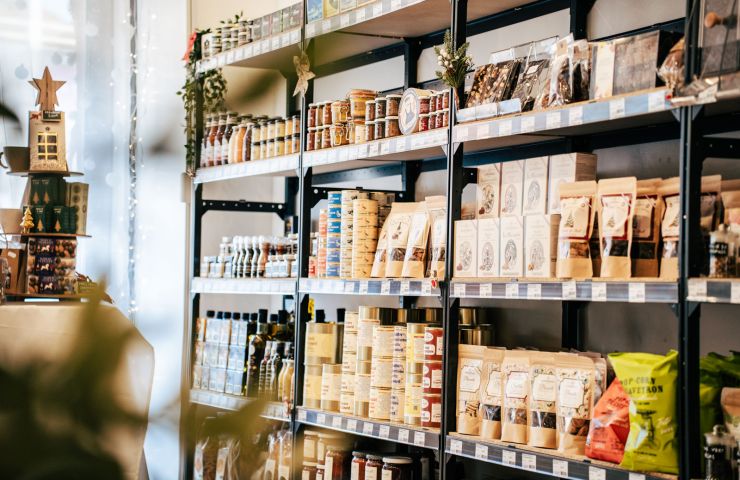
La Boutique de Séverine, a 100% local delicatessen in the Tarn No idea for an aperitif? Head to Séverine's ...
13,7 km - Saint-Sulpice-la-Pointe
Domaine Carcenac
Domaine Carcenac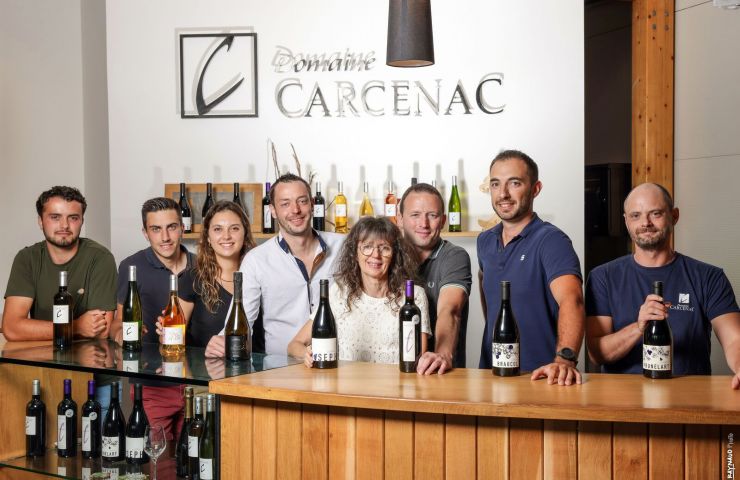
Our family vineyard is located in Montans, a small village with Gallo-Roman remains in the heart of the Gaillac ...
17,8 km - Montans
Carcenac Estate
Carcenac Estate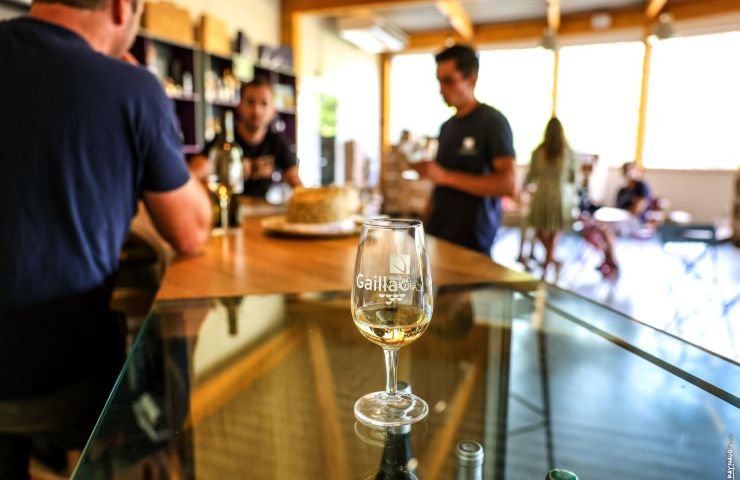
The Carcenac Estate Located in Montans, a small Gallo-Roman village in the heart of Gaillac, our vineyard has been a ...
17,8 km - Montans
OUR CITY GUIDES IN EUROPE


















